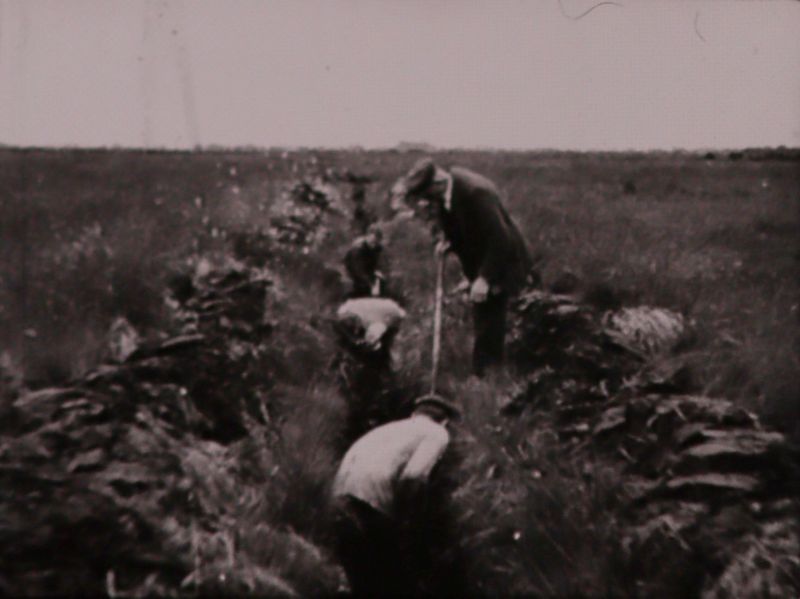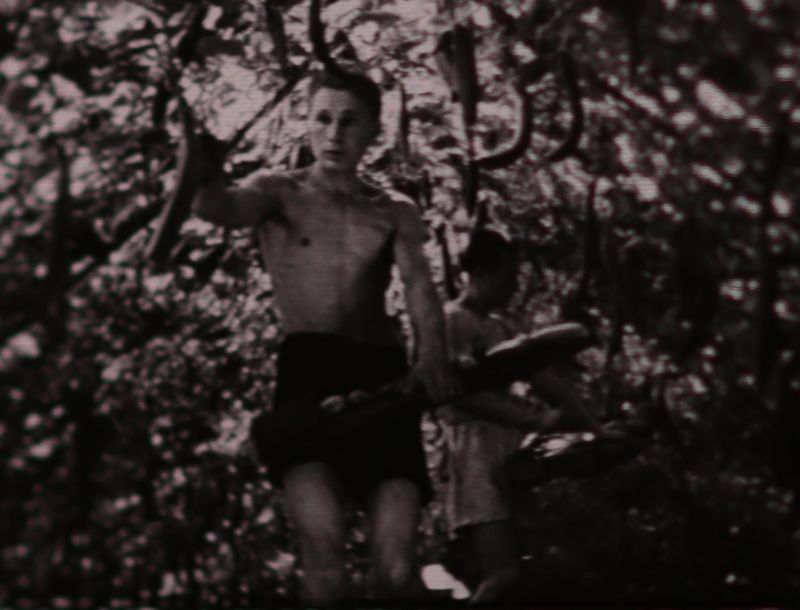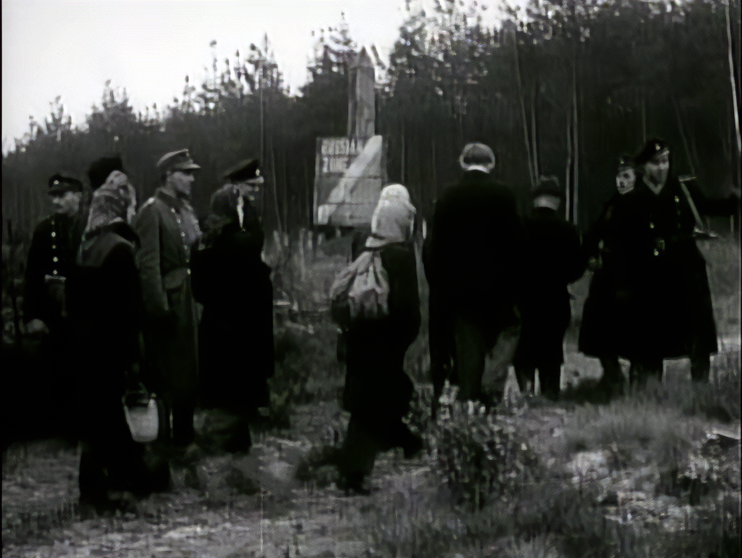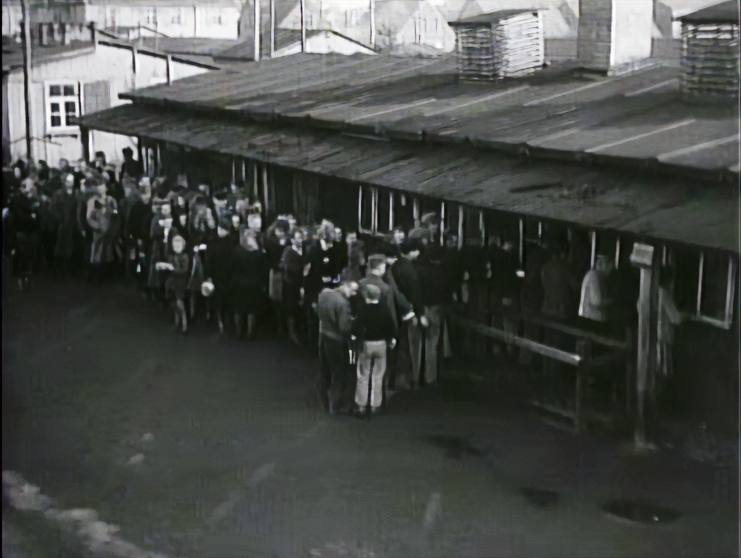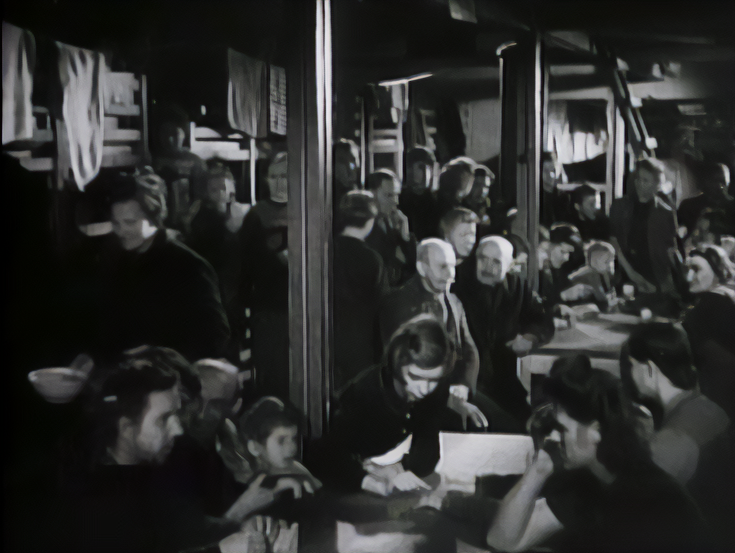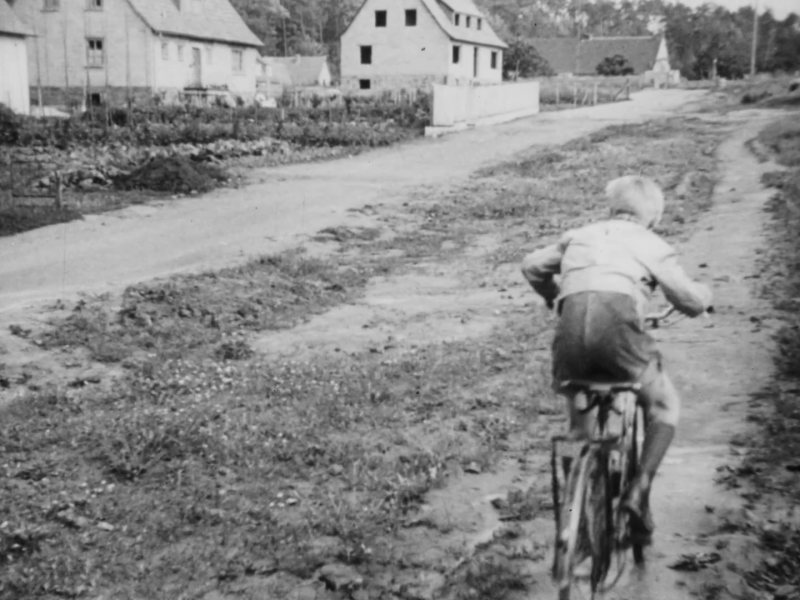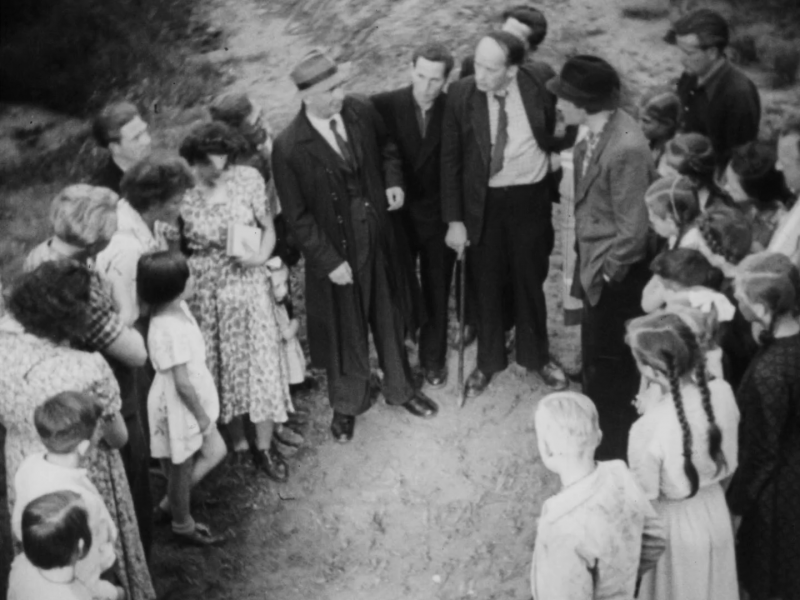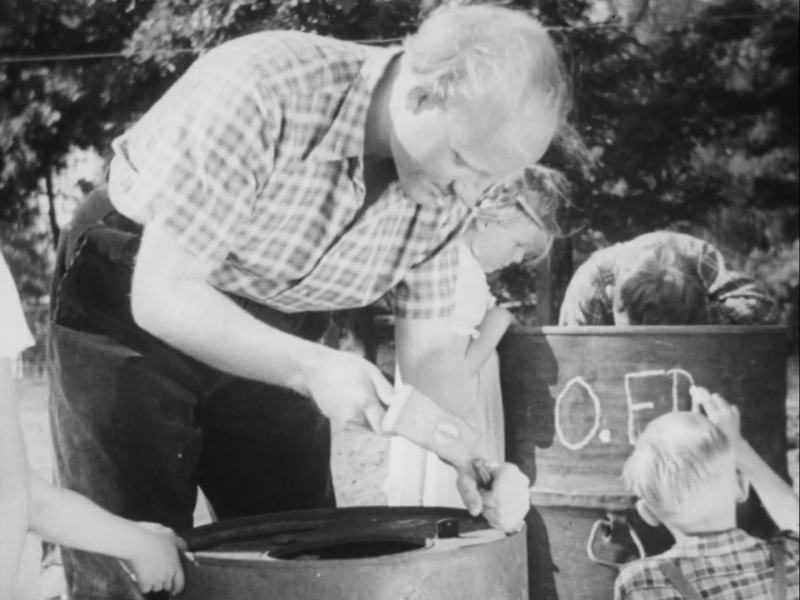ARCHIV 1: Neu-Land. Neuanfang und Zugehörigkeit in drei Lehrfilmen der Nachkriegszeit
ARCHIV 1: New Land. NEW BEGINNINGS AND BELONGING IN THREE POST-WAR EDUCATIONAL FILMS
Einer der ersten Filme, den ein deutsches Filmteam – unter britischem Mandat – nach dem Zweiten Weltkrieg drehte, zeigt die Trockenlegung und Nutzbarmachung eines Torfmoores in Friesland. »Ödland«, heißt es da, »sorgsam meidet der Schritt die weichen, nachgiebigen Schlenken, sonst würde er tief in die wasserreichen Torfpolster einsinken.« Bei vielen Lehrfilmen der Nachkriegsjahre hat man den Eindruck, hinter dem konkreten, mal bodenständigen, mal abseitigen Gebrauchsthema wurde auch Grundsätzliches über die Befindlichkeit des Landes mitgeteilt. Oder ist es nur die nachträgliche Befragung, die nach dem Unausgesprochenen sucht? Das Programm zeigt drei Filme aus den ersten Nachkriegsjahren, die zu edukativen Zwecken entstanden und in denen auf sehr unterschiedliche Weise verhandelt wird, wie es nach der Katastrophe der NS-Zeit und des Krieges weitergehen kann und soll.
Zu Gast am 6. Juni: Peter Hoffman (Kino im Sprengel, Hannover)
Die Einführung und das Gespräch findet in deutscher Sprache statt. Die Filme sind in Originalsprache mit englischen Untertiteln.
One of the first films shot by a German film team after the Second World War – under the British mandate – shows the draining and exploitation of a peat bog in Frisia. »Wasteland«, as a voice intones, »careful steps seek to avoid the soft, yielding swales, otherwise they would sink deep into the water-rich beds of peat moss.« With many educational films created during the post-war years, one gets the impression that something fundamental about the country’s state of mind is being shared too, behind their concrete topics, which range from down-to-earth to the esoteric. Or is it only the retrospective examination that searches for the unspoken? The program features three films from the initial post-war period that were created for educational purposes; they all grapple
in very different ways with how things can and should proceed after the cataclysms of the Nazi era and the war.
As guest at the sceening on June 6: Peter Hoffmann (Kino im Sprengel, Hannover)
The introduction and the talk is in German. The film program runs with English subtitles.
 Neuzeitliche Moorkultivierung
Neuzeitliche Moorkultivierung
Deutschland 1947 | Schwarz-Weiss |
12:00 | Kein Dialog, deutsche Live-Einsprache
 Neuzeitliche Moorkultivierung
Neuzeitliche Moorkultivierung
Germany 1947 | Black & White |
12:00 | No Dialogue, Live Voice-over in German
Der Film zeigt die verschiedenen Stadien der Trockenlegung und Nutzbarmachung eines Torfmoores in Friesland. Vieles geschieht noch von Hand, es werden aber auch maschinelle Innovationen gezeigt sowie die Weiterverwertung des Torfs im Fernwärmekraftwerk, mit dessen Abwärme wiederum Treibhäuser beheizt werden. Am Ende ist in einem an Permakultur erinnernden Kreislauf aus einer »kulturfeindlichen Landschaft« »neuer Lebensraum« entstanden.
The film shows the various stages of draining and utilising a peat bog in Frisia. Much is still done by hand, but mechanical innovations are also shown, as well as the usage of peat in the district heating plant, whose waste heat is used in greenhouses. In the end, in a cycle reminiscent of permaculture, a »new habitat« has been created out of a »landscape hostile to culture«.
Teilen
Regie:
Director:
Dr. Willi Mohaupt
 Asylrecht – Bericht über die Flüchtlingslage
Asylrecht – Bericht über die Flüchtlingslage
BRD 1949 | Schwarz-Weiss |
37:00 | Deutsch
 Asylrecht – Bericht über die Flüchtlingslage
Asylrecht – Bericht über die Flüchtlingslage
West Germany 1949 | Black & White |
37:00 | German
Einer der seltenen Filme, die – hier im Auftrag des Informationsdienstes der britischen Mandatsverwaltung - über die Lage von Flüchtenden berichten, die aus den ehemals deutschen Gebieten Osteuropas in die britische Besatzungszone kommen. Hauptschauplatz sind Erstaufnahmelager, von denen es 1949 noch »Hunderte« gab. Mit ungeschönten, dabei filmisch ambitionierten Bildern und einem sparsamen Kommentar erreicht Asylrecht eine komplexe Darstellung der Flüchtlingsrealität und macht eine noch allgegenwärtige Unwägbarkeit spürbar.
One of the rare films that report on the situation of refugees arriving in the British occupation zone from the former German territories of Eastern Europe – created on behalf of the British Mandate Administration's information service. The main focus is on refugee camps, of which there were still »hundreds« in 1949. With unembellished, yet cinematically ambitious images and sparse commentary, the film achieves a complex portrayal of the reality of refugees and makes an omnipresent imponderability palpable.
Teilen
Regie:
Director:
Rudolf Werner Kipp
 Unsere Straße
Unsere Straße
BRD 1952 | Schwarz-Weiss |
32:00 | Deutsch
 Unsere Straße
Unsere Straße
West Germany 1952 | Black & White |
32:00 | German
Eine offenbar informell entstandene Stadtrandsiedlung soll an die städtische Infrastruktur angeschlossen werden und dafür endlich eine asphaltierte Zufahrtsstraße bekommen. Zumindest zwischen den Zeilen wird dabei auch erzählt, dass es im Lande noch nicht ganz Angekommene gibt und es Zeit sei, diese zu integrieren. Der Film wurde in Marburg gedreht (das aber unbenannt bleibt). Er galt als erfolgreicher Versuch, mittels einer Spielfilmhandlung, deren Held:innen Kinder sind, das Funktionieren kommunaler Institutionen und demokratischer Verfahren zu erklären.
An apparently informally created suburban settlement is to be connected to the urban infrastructure and finally given a tarmac access road. Between the lines, the film also shows us people who have not yet fully arrived in the country and suggesting that it's time to integrate them. The film was shot in Marburg (which remains unnamed). It was considered a successful attempt at explaining the functioning of municipal institutions and democratic procedures by means of a feature film plot with children as heroes.
Teilen
Regie:
Director:
Karl Koch
Regie:
Director:
Herbert Fischer
Script:
Script:
Frank Leberecht

